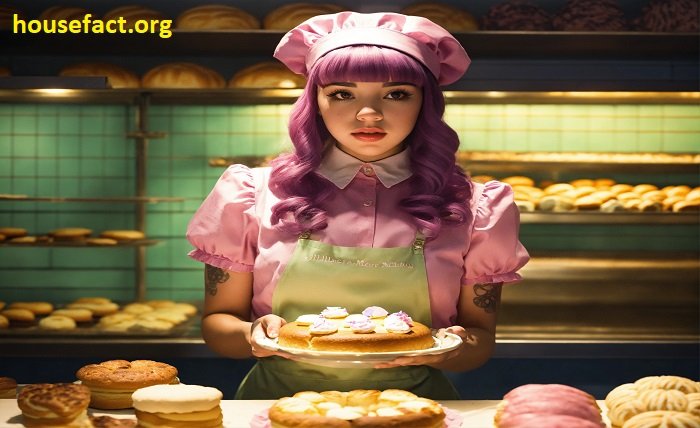Baking and Breaking Reality in Nguyen Duy Tri’s Loaf Dream

Nestled within the unsettling pages of “Acid Madness” (2023), Nguyen Duy Tri’s “Loaf Dream” is not just a story; it’s a sensory feast, a surreal bakery where dreams take the form of delectable pastries, and the very fabric of reality kneads itself to the whims of desire. Through the eyes of Lanh, a young baker struggling to maintain her individuality in a city obsessed with edible dreams, Tri crafts a narrative that is both delicious and disturbing, blurring the lines between fantasy and reality, pleasure and peril.
A City Devoured by its Desires
In Tri’s dystopia, the “Dream Bakery” isn’t just a shop; it’s the engine of society. It molds the dreams of its customers into elaborate pastries, offering a tangible taste of their deepest desires. While initially alluring, this dependence on dream-baked food comes at a cost. Reality becomes malleable, desires morph into uncontrollable cravings, and the city teeters on the edge of a delicious yet destructive delirium. Lanh, immune to the Dream Bakery’s influence, stands as an anomaly, a stark reminder of the dangers of surrendering one’s dreams to the oven of collective consumption.
The Bite of Temptation
Lanh’s resistance isn’t just a matter of principle; it’s a fight for survival. The story explores the seductive power of desire, how the tantalizing aroma of dream-baked pastries can cloud judgment and warp memories. As Lanh navigates the city, she witnesses the destructive consequences of unchecked consumption, witnessing individuals devoured by their own fantastical appetites, their identities reduced to crumbs on the plate of societal expectations.
The Crumbling Crust of Reality
One of the most unsettling aspects of the story is the way dreams and reality bleed into one another. As the city’s dependence on the Dream Bakery deepens, the lines between the two blur. Memories become malleable, desires manifest as tangible objects, and the very laws of physics bend to the whim of a collective sugar rush. This constant uncertainty keeps the reader on edge, mirroring Lanh’s internal struggle and raising questions about the very nature of existence in a world where reality is as pliable as dough.
A Recipe for Rebellion
Despite the pervasive sense of danger and confusion, Lanh refuses to surrender. She finds solace in the ancient art of traditional baking, a process that demands patience, skill, and respect for the natural rhythms of flour and fire. This act of creating outside the system of mass-produced dream-baked goods becomes a symbol of resistance, a reminder that true fulfillment lies not in consuming manufactured desires, but in nurturing our own authentic creations.
A Bittersweet Aftertaste
The ending of “Loaf Dream” is as ambiguous as the city itself. While Lanh’s rebellion sparks a flame of hope, the ultimate fate of the city and its inhabitants remains uncertain. This open-ended conclusion leaves the reader with a bittersweet aftertaste, a lingering sense of concern for Lanh’s future and a lingering question about the price of indulging in our deepest desires.
Conclusion
Nguyen Duy Tri’s “Loaf Dream” is not just a fantastical tale of culinary delights and surreal baking; it’s a profound meditation on the nature of desire, the perils of conformity, and the enduring human need for individual expression. In this city where dreams knead reality into a pliable dough, Lanh’s resistance is a testament to the strength of self-reliance, a reminder that amidst the seductive aroma of manufactured desires, the most satisfying sustenance comes from nurturing our own authentic creations.
The story’s ambiguous ending doesn’t offer a tidy resolution; instead, it lingers like a bittersweet aftertaste, a call to arms for readers to engage in their own exploration of the themes Tri presents. Do we blindly devour the tempting pastries of societal expectations, or do we knead our own dreams with the slow patience of traditional baking, savoring the unique flavor of our own individuality?
FAQ
- What genre is “Loaf Dream”?
While categorized as science fiction within “Acid Madness,” the story blends elements of dystopian fiction, magical realism, and even culinary fantasy, creating a unique and unsettling narrative experience.
- Is the story fast-paced and action-packed?
The focus lies more on internal conflict and philosophical exploration rather than external action. The suspense builds gradually, fueled by the constant undercurrent of uncertainty and the ever-present temptation of dream-baked pastries.
- Is there a clear protagonist and antagonist?
The lines are blurred. Lanh represents the individual fighting for autonomy and self-determination, while the Dream Bakery embodies the seductive yet dangerous forces of conformity and engineered satisfaction. However, the story acknowledges the complexities of each side, avoiding simplistic portrayals of good versus evil.
- Does the story have a happy ending?
The ending is deliberately ambiguous, leaving the future of Lanh and the city unresolved. This open-ended conclusion invites the reader to actively engage with the themes and draw their own interpretations.
- Where can I find the book?
“Loaf Dream” is available within the “Acid Madness” anthology, which can be found online or at major bookstores.




